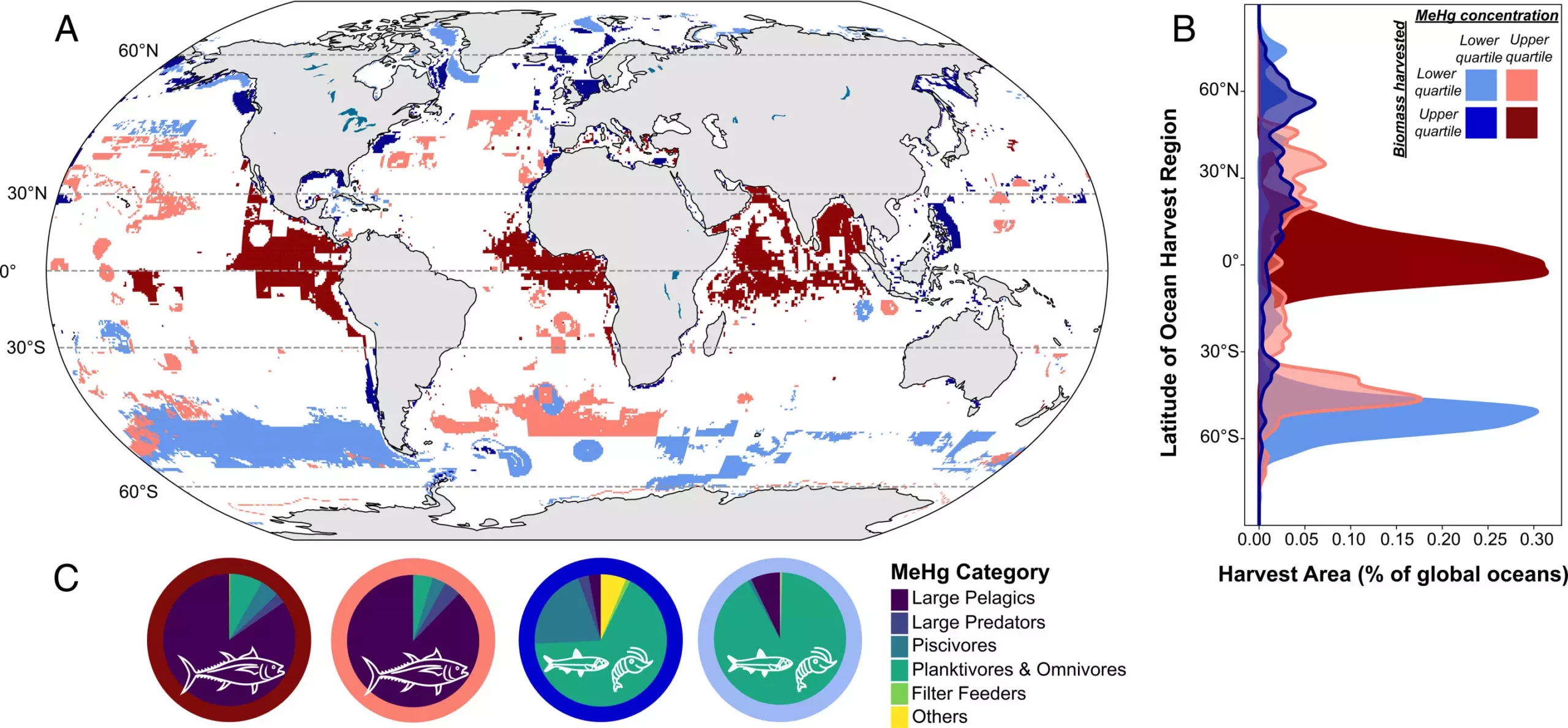Industrial fishing has revolutionized the way we access and consume seafood, providing an abundance of marine options for consumers worldwide. However, as the consumption of large pelagic fish—such as tuna—increases, so does concern over methylmercury contamination. Recent research from the Harvard John A. Paulson School of Engineering and Applied Sciences (SEAS), alongside partners from the University of Delaware and the University of British Columbia, highlights a troubling reality. Over 70% of the methylmercury harvested from oceans can be traced back to industrial fishing practices focused on these large fish species, raising significant public health concerns.
Methylmercury is a neurotoxin that poses substantial risks, particularly for children and vulnerable populations. Upon consuming contaminated seafood, individuals may experience developmental delays, neurological impairments, and cardiovascular issues. Consequently, understanding how industrial fishing contributes to this widespread exposure is critical for formulating effective public health policies moving forward.
As technology advances in industrial fishing, the market for large pelagic fish has surged. Innovations such as onboard freezing and fish aggregating devices have made it easier to locate and catch these valuable species, significantly increasing their availability in grocery stores and restaurants worldwide. Since the 1980s, this boom in tuna fisheries has fundamentally altered dietary trends, leading to a rise in tuna consumption globally. Unfortunately, this spike in demand comes with hidden dangers, as these larger fish often contain higher levels of methylmercury than smaller fish species, due to the processes of bioaccumulation and biomagnification.
The implications of increased tuna consumption are dire, especially given that health recommendations emphasize fish as a primary source of nutrients like omega-3 fatty acids and selenium. However, the same fish that are highly sought after for their health benefits now bring with them considerable risks, increasingly complicating dietary guidelines.
To understand the complexities of methylmercury exposure through seafood, one must delve into the underlying chemistry and biology. Mercury emissions from various sources—industrial processes, waste incineration, and mining—eventually find their way into the oceans. There, microorganisms play a pivotal role, converting inorganic mercury into its more toxic form, methylmercury. This conversion is particularly pronounced in warmer tropical and subtropical waters, leading to higher concentrations of methylmercury that impact marine life.
As methylmercury accumulates in marine food webs, it poses a significant risk for predatory fish. The larger the fish, the higher the concentration, as they consume smaller fish that have themselves accumulated mercury. This biological phenomenon results in top marine predators, such as tuna, harboring alarmingly toxic levels of methylmercury. Therefore, the industrial fishing of these species not only presents immediate risks for consumers but perpetuates a cycle of contamination within the ocean’s ecosystems.
Particularly concerning is the implications of methylmercury exposure for subsistence fishing communities. These small-scale fisheries, which often serve local families or small groups, are crucial for food security. However, they are disproportionately affected by the presence of methylmercury in fish due to their higher fish consumption rates. Studies suggest that an astonishing 84% to 99% of subsistence fisheries worldwide exceed safe methylmercury thresholds.
For these communities—who contribute minimally to the contaminants within their environment—the situation is particularly ironic and unfair. They are often the first to bear the burden of pollution originating from industrial activities far removed from their homes. This raises ethical questions about environmental justice, demanding urgent attention to protect those most affected by choices made by industrialized societies.
As the complexities of the seafood market and methylmercury accumulation become more evident, it is crucial to explore alternatives. Smaller pelagic species, such as sardines, anchovies, and herring, offer a substantial opportunity for healthier consumption. These fish are characterized by lower methylmercury concentrations and higher nutrient profiles, providing an avenue for more sustainable and health-conscious dietary practices.
Moreover, efforts to reform fishing practices, regulate mercury emissions, and educate consumers about fish safety are paramount. By shifting focus away from large predatory fish and advocating for a diverse range of seafood options, we can mitigate the risks associated with methylmercury and improve public health outcomes.
While industrial fisheries meet the growing global demand for seafood, they come at a significant cost to human health and the environment. We must critically assess our fishing practices and make smarter choices for both our diets and the health of our oceans. Through sustainable practices and informed consumerism, we can chart a healthier path forward.


Leave a Reply